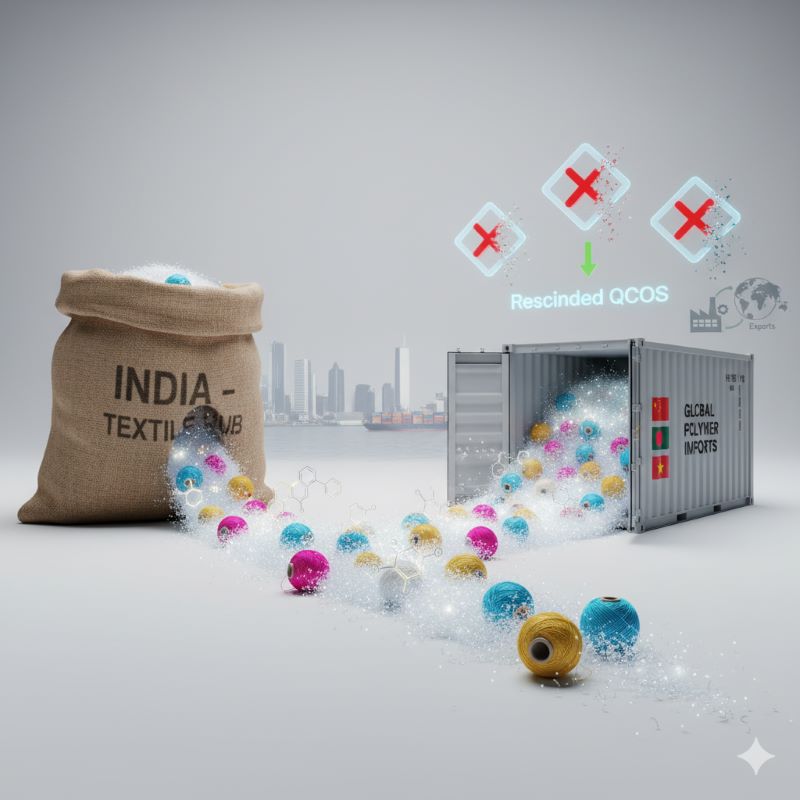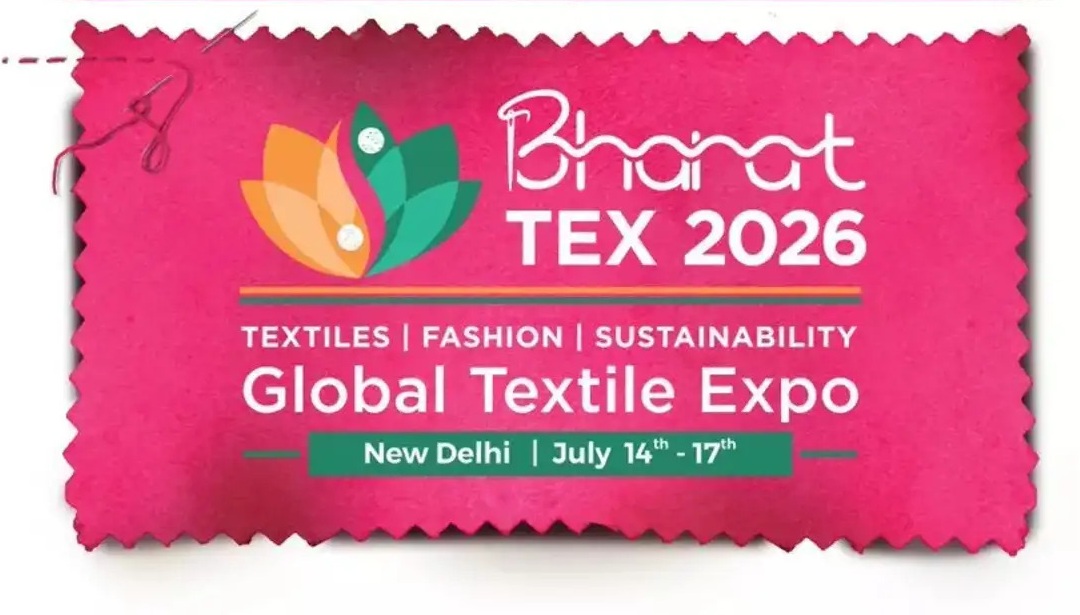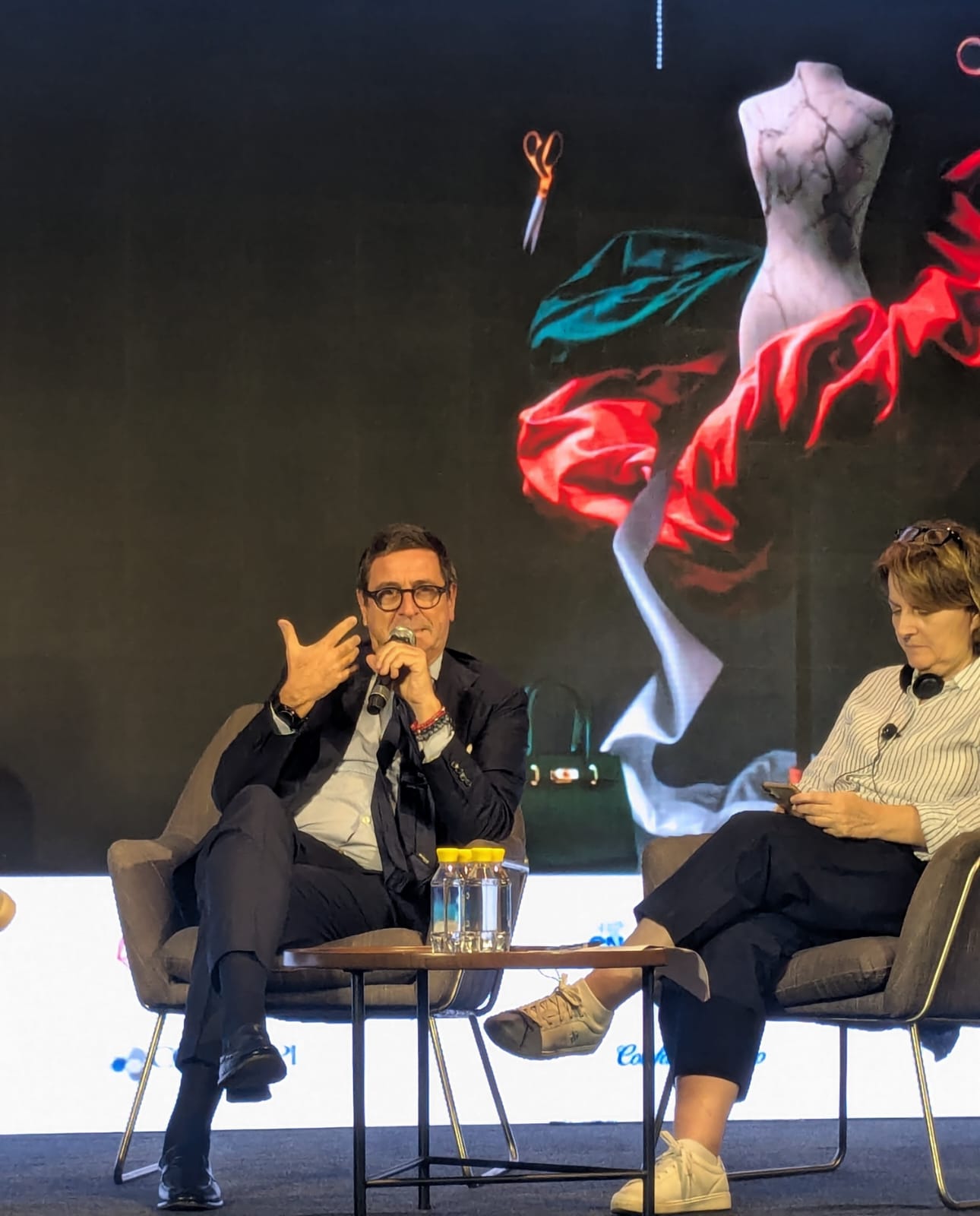
Uncategorised (26)
For Bangladesh’s apparel sector 2014 was an eventful year. Around 400 small and medium-sized factories have been shut following a work order deficit, turning around 10,000 workers unemployed. After the Rana Plaza tragedy, work orders reduced drastically as international buyers pulled out. As a result, many small and medium-sized garment factories had to shut their operation.
Accord and Alliance, the two platforms of the EU and American buyers, completed their inspection at garment factory buildings. The two platforms were formed following the Rana Plaza collapse with a view to inspecting readymade garment units from where they sourced apparels. Alliance has inspected a total of 587 garment factories since 2013 while Accord has so far inspected 1,613 units.
The year 2014 was also remarkable for the apparel industry. The sector which shares a lion’s portion of the export earnings, around 80 per cent, experienced bitter export growth. In addition, the sector failed to meet the export target in the last half of the year 2014 set by the government. Exports of the woven sub-sector during the year showed a shortfall of 10.57 per cent over the target.
Garment exports to one of the major destinations – the US market -- were not as per expected during the year 2014.
Pakistan's garments export posted a robust growth of 10 per cent to US$ 826.836 million in July to November 2014-15, but exporters denied the official statistics. Overall readymade garments export shows a US$ 73.395 million growth in July to November 2014-15, comparing to the apparel export of US$ 753.441 million in July to November 2013-14, according to Pakistan Bureau of Statistics (PBS).
In term of volume, the garments export grew by 1,043,000 dozens (9.09 percent) to 12,540,000 dozens in July to November 2014-15 from 11,497,000 dozens in July to November 2014-15. However the valued added textile exporters rejected the growth projected through official statistics. For instance, according to Pakistan Readymade Garments Manufacturers and Exporters Association (PRGMEA), there is an ample unsold cotton stock, which shows the value-added textile is not doing well in the absence of proper power and gas supplies to manufacturing units. It also blamed the government saying since Commerce Ministry failed to evolve a plan to help the exporters, they could not capitalise on the GSP Plus status to the EU markets.
According to the industry body, the official figures are not reflecting on the real conditions of the country's export, adding that the growth should have been more than 30 per cent instead of 10 per cent since the country enjoyed the GSP Plus status in one of the world's expensive markets.
"The government has no aim or vision to boost up the export as there has been no new textile policy to help steer the exporting sector to a healthy growth," Khokar added. He said the country's total value-added textile output stands at around 60 percent for want of gas and supplies to manufacturing units, which clearly denies the government's claims projecting a healthy growth of 10 percent.
In November, readymade garments export stood at US$ 169.068 million up by US$ 19.217 million (19.19 per cent) from US$ 149.851 million in November 2013. Volume of garments export also posted an increase of 187, 000 dozens (8.24 per cent) in November 2014 to 2,456,000 dozens from 2,269,000 dozens in November 2013. www.prgmea.org
It was a turbulent year 2014 for Asia’s textile industry: soaring labor wages in China, violent workers’ protests in Cambodia and collapsing factories in Bangladesh.
China has already lost its appeal as a cheap garment producing country and foreign apparel retailers have turned to factories in Bangladesh and Cambodia in recent years. But workers in these cheap garment producing countries are also increasingly agitating for better pay.
Many textile retailers already have begun sourcing clothes from Ethiopia. Foreign textile investors benefit from an abundance of cheap labor, cheap energy and locally produced cotton. In neighboring Kenya, the textile industry is also expanding. The government is trying there to lure manufacturers with generous incentives.
East African countries have the potential to become a serious alternative to East Asia in terms of textile manufacturing. Apart from lower labor costs, it is quicker and cheaper to ship textile products from Africa to the main markets in Europe and the US, rather than from more distant countries in the Far East.
African countries also have duty-free access to the US textile market under a special trade agreement signed in 2000. And by utilising and expanding native cotton production, producers can avoid expensive imports by using local materials.
BGMEA and a Chinese company will jointly carry out feasibility study and environmental impact assessment on establishment of the proposed garment industrial park at Baushia of Gazaria in Munshiganj, to accommodate the non-compliant units.
Orient International Holding Company (OIH) will finance the expenditure, while Bangladesh Garment Manufacturers and Exporters Association (BGMEA) will provide the necessary technical support to conduct both the study and the assessment by April to develop the park.
The feasibility study will scrutinize all the related issues, including total cost of developing the park, financing procedures, repaying and duration of fund, developing the park - either in the form of plots or buildings and their number, expected employment generation, and time for relocating the factories and its procedures. The environmental impact assessment will include management of industrial waste materials, and their impact.
The feasibility study will also decide how long OIH will operate the park, when it will hand over its authority to BGMEA, and how it will be done, sources said. The proposed garment park also included establishing a 300-MW power plant, central effluent treatment plants, container terminals, and dumping yards. The study will fix how these things will be set up as well as their capacity and operation, they said. www.bgmea.com.bd
The Dhaka Apparel Summit was held December 7 to 9, 2014.Eighty-five speakers from Bangladesh, the European Union, the USA and other countries shared their views at nine sessions at the summit. Nearly 25 of the speakers were top officials of different western retailers and brands.
Among the participants were brands, fashion designers, sourcing executives, workers’ representatives, civil society organisations, buyers and academics. Among the issues discussed were road communication, environmental sustainability, workplace safety and sustainable production, responsible sourcing and productivity enhancement, and workplace tranquility.
Bangladesh has a target of earning 50 billion dollars from garment exports by 2021 and the summit debated ways on achieving that.
Around 6,000 people took part in the summit and around 15,000 visited the expo on fire fighting equipment, which was held on the sidelines of the summit. Local and foreign firms showcased fire fighting equipment at 92 stalls.
Bangladesh plans to build a knitwear village. The government will allocate 1,000 acres of land for the new project. The government has already allocated 482 acres for a woven garment makers’ project. A Chinese firm is collaborating on this project. A center of excellence will also be launched for the country’s apparel industry. This will support member companies in their skill development programs and will guide them in giving market-responsive training.
bangladeshrmg2021.com/apparel-summit/
Vietnam's garment and textile export sector anticipates a good year ahead mainly because of the imminent free trade agreements. One is the agreement with the European Union, which will cut the tariff rate from the current 12 per cent to zero. Another is the Trans-Pacific Partnership, which would also bring in opportunities for the garment and textile companies to expand markets, especially in the US.
The current tax rates imposed on Vietnamese garment and textile products exported to the US are approximately 17 to 18 per cent. The signing of the TPP would cause the tariff to be cut gradually to zero. Also expected is a free trade agreement with Russia. As a result the garment and textile export industry anticipates a good year in 2015 and feels the export turnover could possibly exceed $24.5 billion.
The impending free trade agreements have helped attract importers, who want to take advantage of the agreements, to transfer orders from other countries to Vietnam. However, Vietnamese firms need to enhance their competitiveness to improve their position in the global garment and textile value chain. They also need to improve their quality to meet the requirements of import countries and to adhere to the guidelines set by the agreements.
Global yarn production increased in the second quarter of the current year compared to the previous quarter thanks to higher output in Asia, South and North America, despite a drop in Europe. Worldwide yarn stocks remained practically unchanged in the second quarter in comparison to the first quarter, with stocks falling in South America and Europe which were offset by higher inventories in Asia.
Year-on-year global yarn stocks jumped due to higher inventories in Europe, and especially in Asia, and in spite of plummeting inventories in South America. Yarn orders were up in Brazil, but down in Europe both in comparison to the previous quarter and year-on-year. On an annual basis, yarn production increased only as a result of higher output in Asia, with South America, North America and Europe recording reductions. Estimates for yarn production for the third quarter of 2014 are positive in Asia, North and South America but negative in Europe. Estimates for fabric production for the quarter are positive in Asia and South America but negative in Europe.
The outlook for yarn production for the fourth quarter is positive in Asia and stable in Europe and for fabric production this quarter the outlook is positive in Asia and stable in Europe.
Reliance Industries and China’s Shandong Ruyi will enter into a joint venture for textiles. The Indian company will own a majority 51 per cent in the proposed JV, with the balance 49 per cent owned by Ruyi. Reliance has a prominent presence in the Indian textile market, especially in the worsted and synthetic suiting fabric segments while Ruyi is a leading textile company in China with a global presence, including US, Europe, Japan, Australia, New Zealand, and a portfolio of world renowned brands. It also operates in India under the Georgia Gullini brand in the worsted suiting segment of the market. The business operation and activities would get realigned to strengthen the proposed joint venture.
The joint venture will build on Reliance’s existing textile business and wide distribution network in India as well as Ruyi’s state-of-the-art technology and global reach. The agreement will bring to Indian consumers some of the well-known brands of Ruyi. Ruyi has made investments in Japan, the UK and Australia in the recent past.
Reliance is India’s largest private sector company. It is India’s greenest and most environment-friendly company, ranking 185th among the world’s largest 500 companies. It is the first private sector company from India to feature in Fortune’s Global 500 list.
www.chinaruyi.com/doce/about/about.asp
The US has banned the import of clothing that contains benzidine-based dyes. These include DnPP, a phthalate used in PVC plastics, and alkanes C12-13, used as industrial lubricant. Benzidine is a synthetic chemical that does not occur naturally. It is a crystalline (sandy or sugar-like) solid that may be greyish-yellow, white, or reddish-grey in color. It will evaporate only slowly, especially from water and soil.
Benzidine and its related chemical substances are used to manufacture dyes. Benzidine-based dyes are used in the production of textiles, paints, printing inks, paper, and pharmaceuticals. They are also used as reagents and biological stains in laboratories, and have more recent uses in laser, liquid crystal displays, ink-jet printers, and electro-optical devices.
Exposure to benzidine-based dyes is of concern because benzidine dyes can be converted in the body into a chemical that is known to cause cancer. In the past, the industry used large amounts of benzidine to produce dyes for cloth, paper, and leather. Major US dye companies no longer make benzidine-based dyes. Benzidine is no longer used in medical laboratories or in the rubber and plastics industries. However, small amounts of benzidine may still be manufactured or imported for scientific research in laboratories or for other specialized uses.
One such event is Matchmaking Forum slotted for February 19 to 20, 2015. More than 2,000 Colombian companies from apparel, agribusiness, manufacturing and services will be showcasing their products. The forum presents several opportunities for entrepreneurs to diversify markets, take advantage of free trade agreements in force and get to know the diverse range of Colombian products. Registered buyers will be able to schedule one-on-one business meetings with Colombian exporters.
The event is expected to attract Caribbean buyers, from countries like the Dominican Republic, Puerto Rico, Jamaica, Trinidad & Tobago, Barbados and the Bahamas. Colombian exports to the Caribbean reached $449 million from January to October 2014. Another event that will take place in Colombia is Colombiatex, January 27 to 29, 2015. This is Colombia’s specialized apparel manufacturing trade show and will showcase active wear, outdoor wear, athletic and swim wear, casuals, denims and lifestyle brands.
Colombiatex is the most important business forum for this industry in Latin America. International buyers of raw materials, textiles, apparel, and full package items will have the opportunity to meet with 450 Colombian manufacturers. Both events are organised by Pro Colombia, a government agency.
colombiatex.inexmoda.org.co/en/
- 1
- 2
- 3
- 4
- 5
- 6
- 7
- 8
- 9
- 10
Fashion’s new equation, profits meet planetary limits at Lisbon’s Textile Exchan…
The Textile Exchange Conference 2025, held under the theme ‘Shifting Landscapes’, marked more than another industry meet-up; it was a... Read more
India Scraps QCOs on Polyester, Polyester Fibre: A level playing field or domest…
In a major policy reversal, the Ministry of Chemicals and Fertilizers, through a notification in the Gazette of India dated... Read more
Is secondhand fashion the new fast fashion?
The fashion industry has long touted secondhand shopping as a silver bullet for sustainability, a movement that redefines style through... Read more
Source Fashion 2026: Championing collaboration to drive sustainable supply chain…
Europe’s premier fashion sourcing show, Source Fashion, is set to double down on the power of collaboration for its upcoming... Read more
Bharat Tex 2026: A premier event for the global textiles and apparel industry
A key consortium of leading Export Promotion Councils (EPCs) and industry associations, the Bharat Tex Trade Federation (BTTF) is set... Read more
Global Sourcing Expo: Offering an unparalleled access to international manufactu…
The highly anticipated Global Sourcing Expo is set to return to the Melbourne Convention and Exhibition Center from November 18,... Read more
The Soulful Stitch: Why ‘High-End’ Italian craftsmanship relies on ‘Happy Tailor…
A fascinating look into the labor practices of high-end Italian craftsmanship revealed a revolutionary philosophy at the recent 'Italian Fashion... Read more
Italian Fashion CEO Warns: 'Small and Beautiful' is no longer enough for global …
The 'Italian Fashion Days in India' (Le Giornate della Moda Italiana nel Mondo), marking a significant new step in the... Read more
Deloitte’s 2025 findings show how Gen Z is forcing a rethink in fashion’s profit…
The fashion industry is entering a generational re-mix. Deloitte’s 2025 Gen Z & Millennial Survey reveals younger consumers who will... Read more
Global Sourcing Hub Descends on Milan: Ready to Show gears up for February 2026 …
The global fashion sourcing industry is set to converge on Milan once again as READY TO SHOW, the only trade... Read more












